|
|
Post by Carlos on Apr 23, 2006 21:04:45 GMT
From this site: www.midwesternepigraphic.org/elephant02.htmlIm only posting the relevant parts of the text, that tries by all means to demonstrate the relationship between these elephant petroglyphs and pre-columbian sailors of Lybian (North African) origin. It gives some references to other elephant petroglyphs in North and South America. In my opinion these Ohio petroglyphs, dated as recently as year 200 BC, clearly show Mastodon elephants, not Loxodonta, Mammuthus or Elephas looking at the elongated body and short legs. See the posted images after the text: This article first appeared in MES Journal Vol. 1, No. 2, December 1984. Happily, each trip to the Barnesville Track Rocks continues to turn up a new find of one kind or another. The last trip gave the Midwestern team its best animal petroglyph to date. After previously locating two other animal carvings thought to be elephants, dogs, rhinos, or hogs (we couldn't agree on which), a third faintly visible pecking of an animal with an extra long snout was located. This one truly looks like an elephant (see the previous page). it has beautiful tusks, a short tail, and the head and back of an elephant.
This petroglyph is so old and weathered that one can walk right by without noticing it, this is , unless the sun is shining just right. We are told that it stands out sharp in early morning or late afternoon sunlight. Evidently the lower angled rays of the sun produce better highlights and shadows on opposite walls of the peckings and enhance legibility. Unfortunately, our visit occurred about noon and even the photographs we took are hard to read. They proved to be unsuitable for reproduction but a rubbing taken on stiffener cloth with a black crayon was obviously an instant success. The original rubbing renders a petroglyph that is 18-inches wide.
How the memory of this animal came to the Track Rocks, we do not know. Either the engraving is so old that the artist was recording a mastodon or, more reasonably, it dates to a later period associated with ancient colonist from the Mediterranean who were famililar with the elephant.
Going along with the last assumption, it is interesting to note that the 1975 radio carbon dating of core samples from the Grave Creek Mound (less than 25 miles from the Track Rocks) gave a date of 200 BC for its construction. This corresponds well with the time period for the use of the Iberian-Punic script found on the tablet removed from the mound. The script also identifies people who were familiar with elephants and Carthaginians.
…
Another factor confirming this first millennium date for pecking the elephant petroglyph is the Track Rocks Goddess Symbol (See Goddess Sign by George Murray in MESJ Vol 1., No.1 and an update in this issue). This symbol carries a brief ogam script which also dates to the Carthaginian period or, at least, within easy memor of it.
This Track Rocks petroglyph is not the first rendering of an elephant in America. There were many of reports of tablets, steles, petroglyphs, and sculptures depicting elephants. Wisconsin even records an enormous elephant effigy earthwork. Many of these were reported in the early 1800's, long before it was fashionable to deny the presence of ancient mariners on this continent prior to the coming of Christopher Columbus.
Adding to these examples are the Elephant Stele of Quenca, Equador and the African Elephant Pipe-Bowl, both attributed to wide ranging Libyans by author Barry Fell in America B. C. Additionally, Fell reports elephant petroglyphs in another of his books, Saga America.
These reports add surprising testimony to the memory of this magnificent animal by ancient mariners from around the world who have recorded it in stone across America. Their ports of origin range from the Mediterranean, Scandanavia, Japan and, no doubt, India as well.
So far as we know, the Barnesville Track Rocks elephant petroglyph is the first rendering of this animal in Ohio. We are indebted to the residents of Barnesville, Ohio who assisted in the location of various engravings on the Track Rocks. The two engravings cited in this writing are these: Compare to these Mastodon images: |
|
|
|
Post by another specialist on Apr 24, 2006 6:44:26 GMT
Thanks mate great info and pics
|
|
kk1
Full Member
  
Posts: 63
|
Post by kk1 on Apr 24, 2006 14:52:34 GMT
Wow as I'm from Ohio that's great stuff. The extensive swamps that used to surround the Great Lakes always seemed like a great place for mastadons in my opinion. I know every few years in the upper midwest mastadon skeletons are found in old bogs, some so fresh they contain their last meal. Here's the artcile of them culturing the bacteria from one www.highbeam.com/library/docfree.asp?DOCID=1G1:10838997&ctrlInfo=Round19%3AMode19b%3ADocG%3AResult&ao= I hope they kept the remains well preserved since if the bacteria were able to survive this would be a great specimen for DNA extraction and cloning in the future. |
|
|
|
Post by another specialist on Apr 25, 2006 21:10:08 GMT
Most scientists point to changes in climate to explain the death of these animals. The late Pleistocene era is the time before, during, and just after the last great Ice Age. During that period, gigantic sheets of ice covered much of North America, Europe and Asia. Some scientists suggest that these harsh, cold conditions of the time gave the megafauna an advantage. When the Ice Age came to an end, so did the mammoths, along with many other animals. Not all scientists accept this theory, pointing out that these mammals had survived even bigger climate changes earlier. Indeed, some of the relatives of the mammoths, the elephants, survive in India and Africa today. If they could make it, why couldn't the North American mammoths and mastodons? A second theory is known as the "Pleistocene overkill" hypothesis. About the same time mammoths and mastodons were becoming extinct in North America, scientists think early man crossed over the Bering Straight from Asia and began to populate the Western Hemisphere. According to the theory these groups over-hunted the mammoths causing their extinction. Because the mammoths and mastodons probably had long gestation periods, they might have found it hard to maintain their populations with new births if they were constantly being hunted. Examinations of early dwelling sites from that time show that the mammoths were hunted for food to at least some extent by the Clovis people. The Clovis moved into North America around 11,500 to 14,000 years ago. By comparing the location and age of Clovis dwellings with mammoth and mastodon fossils, scientists found that whenever the Clovis populated an area occupied by mammoths and mastodons, these animals began to die out. Scientists also note that the mammoth remains from that time show spiral fractures of the bones which were probably caused by heavy blows right before or after death. These might have been caused by human hunters trying to break open the bones to get at the nourishing marrow inside them. Scientists who disagree with the theory argue that the number of human hunters was too small to have seriously threatened the mammoth and mastodon populations. The Clovis would have have to had killed more than 10 times the amount of animals they would have needed to meet their dietary needs in order to have rendered the mammoths and mastodons extinct. This amount of overkill was unlikely given how dangerous these hunts against these huge animals would have been. Also there is evidence that mammoths found in the famous "Mammoth Trap" of South Dakota also suffered from spiral fractures to their bones even though they died many centuries before early man arrived in North America. Scientists further argue that many other animals not hunted by early man also went extinct at the same time. Believers in the "Pleistocene overkill" theory refute this, suggesting that since the mammoths had such a major impact on the environment of land in which they lived, their disappearance might have caused other species to also go extinct too. Ross MacPhee of the American Museum of Natural History has come up with another theory to explain the missing mammoths: the germ theory. Ross suggests that a deadly disease (perhaps carried by early man) infected the mammoths, mastodons, and perhaps other species, killing them. He is trying to find evidence for this by examining the marrow of frozen mammoths in Siberia looking for evidence of germs. While many scientists think that this idea may be worth considering, until Ross can show some evidence most see it as an unlikely solution, so the search will go on for an explanation for the missing mammoths. www.unmuseum.org/missingm.htm |
|
|
|
Post by Bucardo on Apr 27, 2006 0:22:11 GMT
This stories are amazing, I'm really surprise.
|
|
|
|
Post by another specialist on Apr 27, 2006 11:41:02 GMT
I was suprised myself when Noisi mentioned it for the first time
|
|
|
|
Post by Carlos on Apr 29, 2006 16:17:31 GMT
A New Jersey Mastodon EXTINCTION Originally Published By New Jersey State Museum 1960 By Glenn L. Jepsen Edited by GET NJ, COPYRIGHT 2003 Why is the mastodon now as extinct as the dodo and the Passenger pigeon? No one really knows why, but professional as well as amateur paleontologists have made many guesses about the cause of its disappearance. Until recently some people imagined that a few mastodons might even now be tramping and trumpeting through the woods in unexplored areas of North and South America. In the 1780's President Jefferson was firm in his belief that no race of animals was ever lost from "nature's chain," and he cited as evidence the stories of some Indians about living mastodons in the northern and western parts of North America. These Indians told tales about ancient battles, which their ancestors had witnessed, between giant beasts, and also reported that parts of the trunks and other fleshy hits of big animals could be found buried near the surface under leaves and thin layers of dirt. Most of these claims were inspired by wishful thinking or by efforts to please an audience through the invention of interesting myths about creatures that had obviously excited the imaginations of white men who were eager to explore the wilderness and to see and collect its animal treasures. The truth is as remarkable as the lies. It is true that Indians and mastodons and giant beavers and ground sloths and mammoths and sabre-toothed "tigers" and camels and extinct kinds of horses and bison all lived at the same time in America some thousands of years ago. Indian artifacts have been found with the bones of these animals as well as others which have also vanished from the face of the earth. In Texas, California, Tennessee, Florida, and New Mexico there are evidences that man and mastodon knew and slew each other, and this was probably true in many parts of the forests of North America. Mastodon meat, either roasted or raw, may have been a delicious treat that was well worth the effort and the difficulties of the kill. How long ago? Chemical tests of the age of American mastodon tusks or of wood found close to mastodon bones in Ohio, Indiana, and Michigan indicate that the animals were living as recently as 5,000 to 10,000 years ago. Archeologists have debated for many years about the age, nature, and meaning of ancient rock carvings in Asia and America that seem to represent mastodons and mammoths. In Europe the cave artist of about 25,000 to 12,000 years ago depicted the mammoth with a curiously "bombed" or elevated skull and with long hair on its belly. When the caves were discovered and explored by modern man these features were believed to be mere exaggerations, the result of artistic license. Frozen carcasses of mammoths, found in Siberia, proved that the murals were true to life, natural and accurate. www.getnj.com/mastodon/extinction.shtml |
|
|
|
Post by another specialist on Apr 29, 2006 20:35:50 GMT
Clovis Hunting and Large Mammal Extinction: A Critical Review of the Evidence Donald K. Grayson1,3 and David J. Meltzer2 The North American archaeological phenomenon known as Clovis is famous for the fact that a number of sites that contain diagnostic Clovis artifacts also contain the remains of mammoth and perhaps other extinct genera. In the past, this has led many to assume that Clovis subsistence adaptations were organized around large, now-extinct mammals. It has also seemed to support the argument that the colonization of the Americas by hunters about 11,500 years ago caused the extinction, either directly or indirectly, of some 35 genera of primarily large mammals. Here, we review all sites known to us that have been suggested to provide evidence for the association of Clovis-age archaeological material with the remains of now-extinct Pleistocene mammals.Of the 76 sites reviewed, only 14 provide strong evidence that Clovis-aged people hunted such mammals. Of these sites, 12 contain the remains of mammoth, while two contain the remains of mastodon. Although the prime focus of the analysis we present is on Clovis-age archaeological associations with now-extinct mammals, we conclude that there is no evidence provided by the North American archaeological record to support the argument that people played a significant role in causing Pleistocene extinctions here. www.smu.edu/anthro/faculty/dMeltzer/pdf%20files/JWP_2002_Clovis_hunting.pdf |
|
Deleted
Deleted Member
Posts: 0
|
Post by Deleted on Apr 29, 2006 21:46:37 GMT
I was suprised myself when Noisi mentioned it for the first time  I thought You all know that or had heared it before.  Another (quite stupid) story, a man that explores old mysteries, ufo-things, early contact with aliens etc. (I'm not sure if it was Erich von Daeniken), was the first who did mention these 'Maya-Elephants', he said these statues show Asian Elephants that the Maya have seen during a ufo-travel to India (!!!) ;D Well, this 'scientist' did not know Cuvieronius at that time. I tought I could remember another statue of such an animal - with screwpull-like tusks (Cuvieronius had exactly such tusks !). And then, there was this skeleton that was found somewhere inside an old Maya-Place, I think it was lain on a Maya stone-way (excavated during a archaeologic excavation). Another 'scientist' mentioned this in his book (not worth to buy it) and said that this animal died out 10000 years ago and so the Maya ruins have to be even older. He also did not know that this mastodon lived into much later times. |
|
|
|
Post by another specialist on Apr 29, 2006 21:50:21 GMT
Noisi we all didn't know heard rumours here and there but it seems more reality now.
|
|
|
|
Post by another specialist on May 1, 2006 21:05:50 GMT
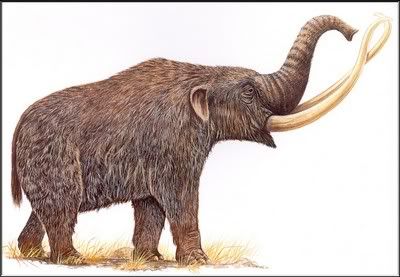 another pic from my computer |
|
|
|
Post by Carlos on May 7, 2006 21:27:31 GMT
Some early Holocene Argentinan Chaco sites with Stegomastodon sp. remains, described in: ZURITA, Alfredo E., CARLINI, Alfredo A., SCILLATO-YANE, Gustavo J. et al. The extinct mammals of the Quaternary of Chaco Province, Argentina, and its relationship with those of the east of the pampean area and Chile. Rev. geol. Chile, July 2004, vol.31, no.1, p.65-87. ISSN 0716-0208. (In Spanish) ABSTRACT In this paper, the authors report the remains of some taxa of Pleistocene mammals coming from Chaco Province, Argentina. These remains were classified as Glyptodon sp., Neosclerocalyptus cf. N. heusseri, Panochthus sp., Propraopus grandis, Megatherium cf. M. americanum, Megatherium sp., Scelidotherium cf. S. leptocephalum, Lestodon sp., Equus (Amerhippus) neogeus, Toxodon cf. T. gezi and Toxodon sp., Smilodon populator, Morenelaphus sp., Stegomastodon cf. S. platensis and Stegomastodon sp. It is possible to assign a Bonaerian-Lujanian age (middle Pleistocene-early Holocene) for this assemblage of mammals. Paleozoogeographically, the authors remark the similitude of the taxa here described and those reported for the pampean region, Santa Fe, Formosa, Paraguay and southern Bolivia. This situation permits to infer similar climatic conditions among these areas. On the other hand, a preliminary palaeofaunistic comparison with Chile shows some significative differences, specially with central Chile, while the southern and northern regions are more similar to the Argentinian Quaternary paleofauna. 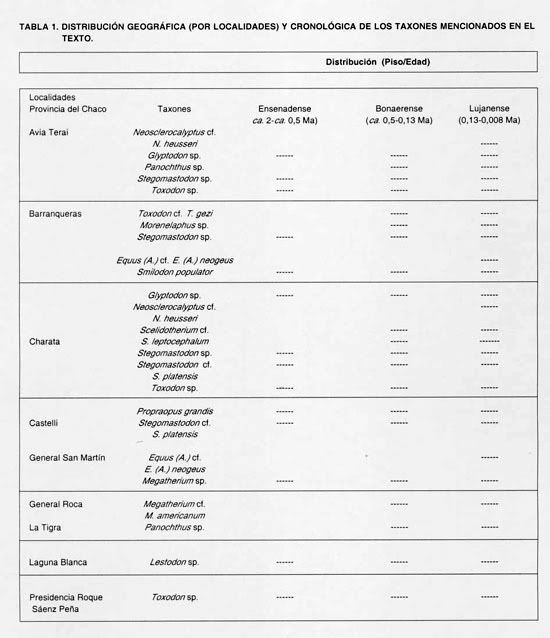 |
|
|
|
Post by another specialist on May 7, 2006 22:03:25 GMT
interesting keep up the good work mate
|
|
|
|
Post by another specialist on Aug 25, 2006 8:08:15 GMT
|
|
|
|
Post by Carlos on Jan 21, 2007 17:09:41 GMT
In general, I think that creationists are nothing but a bunch of fundamentalists, but sometimes their sites have interesting information, like this on the subject of this thread: www.creationism.org/vonfange/vonFangeTimeUpDownChap06.htmThe mastodon elephant arrived in America during the Miocene epoch, according to the texts, multiplied astonishingly, and then became extinct. Assorted explanations have been offered, including the theory that early hunters wiped them all out. Various dates, for example, 4500 B.C., are given when the last elephant in America died. A far more recent date is suggested by the following. Near Concordia, Columbia, a complete skeleton of a mastodon was found in an artificial salt pond, which had been constructed by Indians. The pond, with its bottom of paved stones together with the animal, had been entombed by a sudden landslide (Victoria Institute, 1886, 22:151). Rock carvings of the mastodon was found in Hava Supai Canyon, Arizona, and were believed to date back to 10,000 B.C. In the same location, however, utensils were found made out of live, not fossil, ivory, which could lower the date considerably (Santesson, 1970, p.39). In 1929 the skeleton of a mastodon was found in Ecuador. Evidently killed by Indians, a circle of fires had been built around the body for convenient roasting of the flesh. A landslide covered the site, which also included broken painted pottery and artifacts. This remarkable find was dated at the beginning of the Christian era (Scott, 1962, p.261). In 1928 a Mayan workshop was uncovered in Central America. The archaeologist concluded that the owner of the shop, dated from the second to the fourth century A.D., must have kept a mastodon, perhaps even as a pet, for the bones of the animal were found among smashed bowls and jars (Wendt, 1956, p.524-525). One paleontologist believed that mammoths still lived in the interior of the American continent at the time of the first Spanish explorers. He supported his belief by the fact that such bones are found under a few inches of peat. Many accurate descriptions of the elephant have been collected from various Indian tribes in America and Canada (Scientific Monthly , 75 [Oct. 1952], 215-221). David Ingram, an English adventurer, was put ashore with 113 other men between Mexico and Florida in 1568, and he wandered for years in the American interior before making his way to the east coast of the American colonies. In his report to the state secretary of Queen Elizabeth, he described precisely and drew accurate pictures of elephants as well as bison and other animals he and his companions had observed during the journey. Ingram could not have known that some centuries later, elephant bones (mastodons and mammoth) would be discovered all over the continent. This account is not taken seriously, but it is a curious fact that 200 years later President Jefferson was informed by a delegation of Indian chiefs that hunting in the interior lands included animals described as elephants. It is a matter of record that President Jefferson asked Lewis and Clark to be on the alert for elephant herds during their exploration of the West (Wendt, 1956, p.525-526). |
|
|
|
Post by another specialist on Jan 23, 2007 23:24:02 GMT
there is fossil evidence for recent coexistence between man and mastodon. Rock carvings of the mastodon were found in Hava Supai Canyon in Arizona. A skeleton of a mastodon was found in Ecuador, evidently killed by Indians, with a circle of fires built around it for roasting of the flesh. Mastodon bones were found in a Mayan workshop in 1928, with smashed bowls and jars. They found a complete skeleton of a mastodon in an artificial salt pond constructed by Indians. This pond had a bottom of paved stones with the animal entombed by a sudden landslide.26 Since the Mayan civilization peaked about 1000 AD, this would suggest a very recent date for the existence of the mastodon, well later than the predictions of evolutionists. www.rae.org/revev2.html |
|
|
|
Post by another specialist on Feb 4, 2007 14:08:35 GMT
Flannery writes: One of the most extraordinary of these is the Monte Verde site in southern Chile. There, bones of the South American elephant-like gomphothere (Cuvieronius) have been found together with pieces of animal skin (attached to poles in some cases), wooden and stone tools and even meat fragments. The skin is clearly from a large mammal -- possibly Cuvienius itself. Several websites also confirm this: Monte Verde Excavation: or Clovis Police Beat a Retreat: www.unl.edu/rhames/monte_verde/MonteVerde.htmStone projectile points found there were carefully chipped on both sides, archeologists said. The people of Monte Verde also made digging sticks, grinding slabs and tools of bone and tusk. Some seeds and nuts were shifted out of the soil. A chunk of meat had managed to survive in the bog, remains of the hunters' last kill; DNA analysis indicates the meat was from a mastodon. Monte Verde: Oldest Archaeological Site in the Americas: www.cabrillo.cc.ca.us/~crsmith/mverde.htmlAnimals bones were well preserved. Most came from mastodons (a close but extinct relative of the mammoth &elephant). One of the bones still had a piece of meat attached to it. Archaeology: archaeology.about.com/library/weekly/aa081097.htmFood, in the form of extinct llama, shellfish, a variety of vegetables and nuts, and most astoundingly, a chunk of mastodon meat, was recovered at the site. www.theperfectworld.us/thread.php?id=1025&postNum=144 |
|
|
|
Post by another specialist on Feb 4, 2007 14:09:31 GMT
Yesterday I did read in a book (Dinosaurier und andere Tiere der Urzeit) that the south american gomphothere Cuvieronius became extinct as late as A.D. 400. Does anybody know further details about this? It would fit well with proposed late survival of mastodons. Another source: en.wikipedia.org/wiki/Cuvieronius |
|
|
|
Post by another specialist on Feb 4, 2007 14:09:55 GMT
Well, I think i had postet that here anywhere. I now of a skeleton that was found lying on a former Maya street or something like that. That was mentioned in a book about unaccountably phenomenons (UFO's etc.) and it was said that because of the skeleton the ruins have to be older than 10000 years. I wrote a letter to the author of the book to tell him about the holocene extinction of this Mastodon but never received an answer. And still there are statues in parts of South-America which definitely show elephant-like animals. Erich von Däniken said the old Indians were brought to India by aliens in their UFO's where they saw Indian Elephants and than depicted them back at home ! ;D |
|
|
|
Post by dantheman9758 on Apr 3, 2007 1:42:12 GMT
Holy cow, i just watched a show on the discovery channel about alien conspiracies and whatnot. And some alien evidence hunter was using those gomphothere sculptures of South America, and saying that they were Elephants, and they were proof that the ancient South American cultures were in contact with the African pyramid builders because he thinks modern humans were incapable of building civilizations without alien help. He said that "how could ancient South Americans have any knowledge of Elephants in a time period with out transcontinental technology". Whats worse is that even the narrator of the show said that they clearly looked like elephants, and that this was strong evidence that his theories were right.
I feel sorry for the people who watched the show and are now humble believers that elephants were shown to the South Americans by aliens. Its obvious these ET hunters have no idea about zoology or paleontology, otherwise they would have known that the animal sculptures were GOMPHOTHERES not modern elephants. I really feel like contacting him to tell him that his stupid evidence is wrong but it doesn't matter as he will still believe all of his alien theories anyways. Besides I can't remember the name of the show, or his name.
|
|
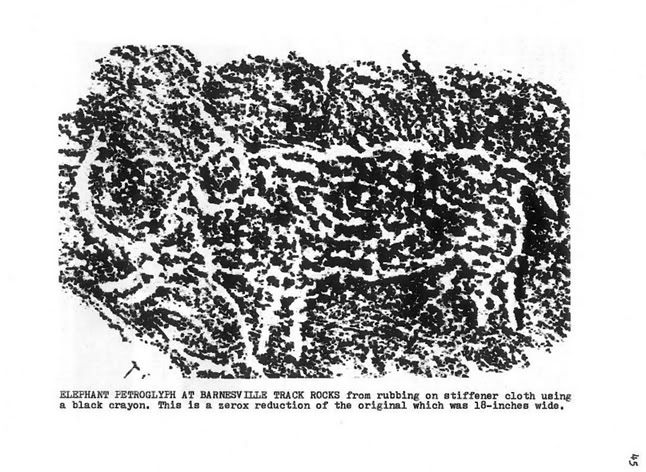
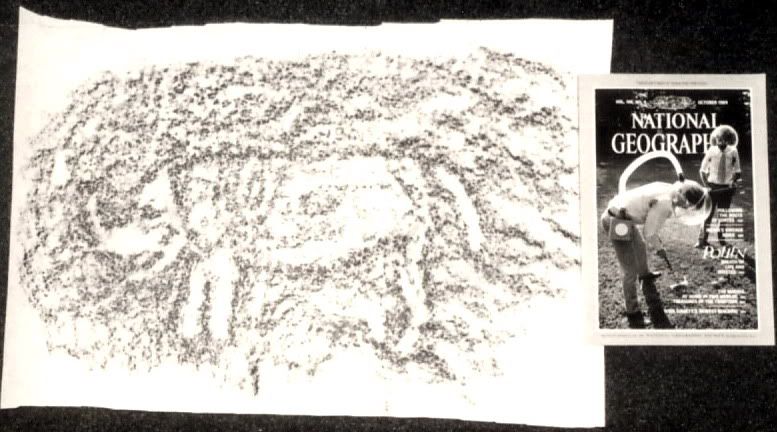
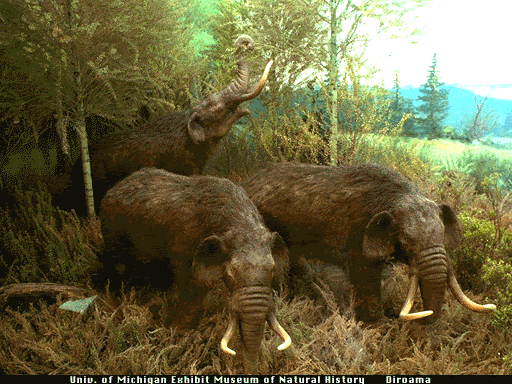
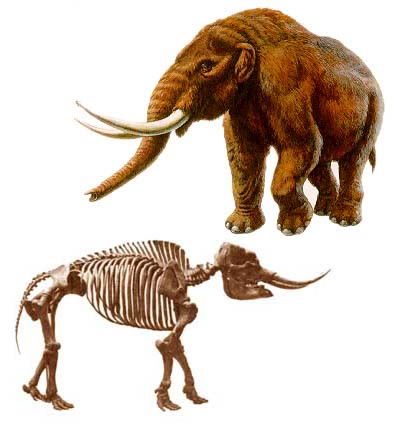






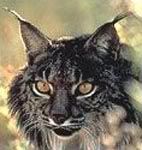


 I thought You all know that or had heared it before.
I thought You all know that or had heared it before. 

